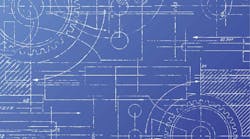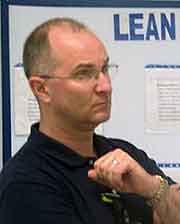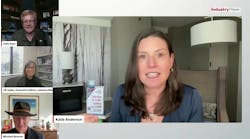“They need a conveyor,” said the guy on my left as we observed the assembly process. Operators walked back and forth from the assembly station to bring finished parts to the shelf and to get components for the next build.
“Why not just move the assembly station next to the parts?” I thought. “Why the impulse to automate and make easier what shouldn’t be done at all?”
Taiichi Ohno made a nice list of ways to categorize wastes that is known as “The Seven Wastes.” The wastes he identified in his book are overproduction, waiting, transportation, over-processing, inventory, defects and motion. In the example above, the layout is requiring the waste of motion and transportation. The best time to remove these wastes is in the design, or redesign, of the process. Build Lean into the process instead of trying to add it later.
Another example is a facility I worked at that had developed a process design for manufacturing a high-volume, complex electronic part. The design would require $3.5 million and 56 weeks to install. The design would meet the customer requirements and the corporate focus on minimizing headcount, but it had unacceptable levels of financial risk if the actual demand was 15% less than forecast. Actual sales were typically +/-25% of forecast on similar products with this customer, and we had no reason to believe that this forecast was any more accurate than those of the past. Focusing on headcount reduction instead of waste reduction had resulted in a high capital expense design and high operating costs, despite having few operators.
The Rule of Ten states that as problems progress through the development process, they will require 10 times more time, money, and resources to correct.."
I led a team to design a process for that same complex electronic part, but one that used a low capital expenditure (CapEx) strategy that also focused on building lean in and wastes out. In the new design we focused on minimizing the total cost of ownership (TCO). By designing a system that minimized waste of motion and transportation, we reduced the CapEx by $1.8 million and the operating costs by over 15% while improving first time quality and machine reliability.
Even with the need for 12 more employees than required by the other design, our design saved significant amounts of money by reducing interest, utilities, MRO costs, area, overtime caused by downtime, and WIP inventory. We cut $1 million just by eliminating the integrated powered conveyors. A half million dollars of the conveyor cost was for hardware and another half million dollars was for software and integration. Our team's design also cut over 1,000 square feet out of the footprint and $50,000 out of maintenance, repair, and overhead (MRO) inventory. If I don’t have the conveyor, I don’t need spare belts, motors, lubricants and the maintenance hours.
Having an approach that did not require integration of material movement on conveyors also reduced the installation by 20 weeks. The design was also scalable so that it could expand as demand increased.
This JIT approach to spending CapEx reduced the financial risk if the forecasted demand was not realized after the first year. Spending less capital and spending it later contribute to cash flow, return on invested capital (ROIC) and reduced the financial risk. Using less area reduces operational costs while opening space for other projects without having to spend money on facility expansion or leasing new space.
Focus Improvement Efforts on the Front End
“Pay me now, or pay me more later.” Product and process design drive 80% of the total costs, but most continuous improvement effort is spent trying to reduce the remaining 20% in current production. The Rule of Ten states that as problems progress through the development process, they will require 10 times more time, money, and resources to correct. A problem found in prototype that could have been caught and fixed in a drawing will require 10 times more effort to correct. A problem that should have been corrected at the prototype stage will cost approximately 10 times more when caught at the pilot stage and 10 times more than that at the production stage, etc.
Spending the time and money early in the design stage to build in quality and Lean thinking should avoid significant CapEx and operational costs in production.
Reducing Waste by Design
Eliminate the root cause of the wastes. To reduce the wastes of transportation and motion, design the process steps close to each other. Very close; side by side with no space between them. The part comes out of one process and is placed into the next. This would require machines designed without the requirement for access on the sides; only the back or front of the machine would require access. It will require right-sizing machines and eliminating monument processes.
Create cells from machines designed for rapid changeover, or no changeover.
Machines would need to be designed for reliability and maintainability; that is, high Mean Time to Failure (MTTF) and low Mean Time to Repair (MTTR), and from standard parts to minimize replacement parts and spares. Machines and processes include error proofing in the design.
To reduce the wastes of transportation and motion, design the process steps close to each other."
Combine these design parameters with level flow, and strategies to minimize the effects of customer and supplier variation, to achieve world-class results.
Steven Covey said, “Start with the end in mind.” If the end in mind is to have a safe workplace, save money, save space, save time in launching new processes, and increase flexibility, then reduce or eliminate waste at the root cause. Spend the engineering hours early in design to avoid spending more trying to fix the problems after production has begun. A focus on designing Lean into the process can reduce CapEx and operating costs while improving ROIC, cash flow, and financial risk.
Concerning the line that I started this article with, we redesigned and moved the cell to minimize walking and transportation of parts. This doubled productivity without the need to add conveyors, material handlers or capital.





